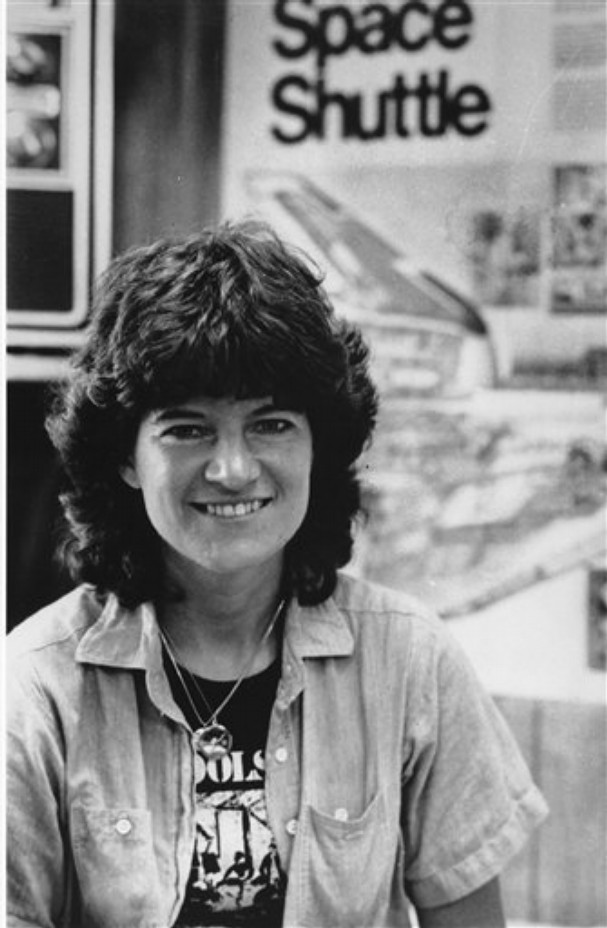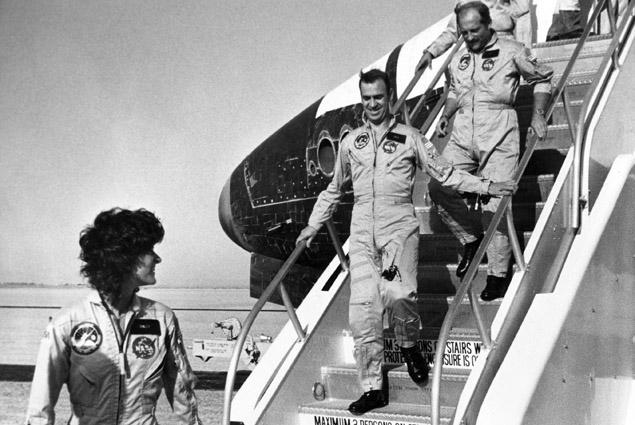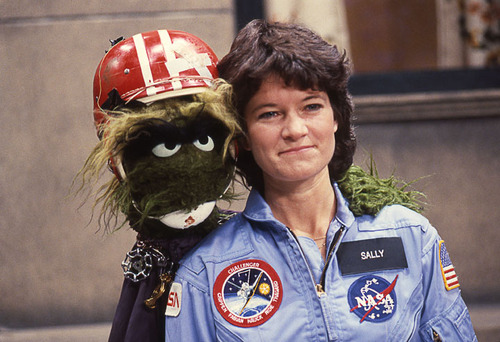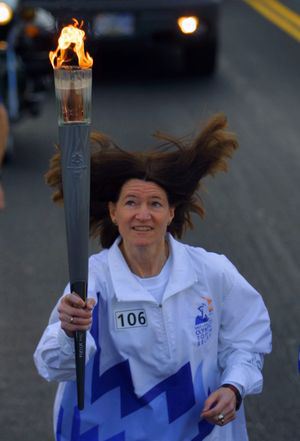
Like any pioneer in an age of mass media, Sally Ride was asked a lot of dumb questions. She answered them, but not without some consternation.
Ride, who became the first American woman in space in 1983–cosmonaut Valentina Vladimirovna Tereshkova was the first overall twenty years earlier–and passed away in 2012, is the subject of today’s multi-scenario Google Doodle. The opening of “A Ride in Space,” a painfully titled People piece by Michael Ryan which profiled the astronaut as she prepared for her Challenger mission:
JOHNSON SPACE CENTER
This is the hero factory. In this network of squat gray bunkers set apart from downtown Houston by a freeway, a side road and two speed traps, the likes of Alan Shepard, Gus Grissom, John Glenn and Neil Armstrong were introduced to the world and transformed from men into legends. Today’s reusable space shuttle may be less exotic than the old space capsules; still, as NASA demonstrated on one steamy Texas afternoon a few weeks ago, it can still make an astronaut into a household name. Case in point: Sally Kristen Ride, mission specialist on this week’s scheduled flight of the shuttle Challenger and the first American woman in space.
“This mission has a lot of historic firsts,” NASA spokesman John Lawrence coyly announced as the session began. But the television crews and tourists had not convened to hear about Indonesia’s new communications satellite, or the radish seed experiment designed by two Cal Tech students and placed on the shuttle by the largesse of movie wizard Steven Spielberg. All eyes brushed past shuttle commander Robert Crippen, Capt. Rick Hauck and crew members John Fabian and Norm Thagard. Instead, they focused on Ride, 32, the living proof that the Brotherhood of the Right Stuff is now admitting sisters.
No other astronaut was ever asked questions like these: Will the flight affect your reproductive organs? The answer, delivered with some asperity: “There’s no evidence of that.” Do you weep when things go wrong on the job? Retort: “How come nobody ever asks Rick those questions?” Will you become a mother? First an attempt at evasion, then a firm smile: “You notice I’m not answering.” In an hour of interrogation that is by turns intelligent, inane and almost insulting, Ride remains calm, unrattled and as laconic as the lean, tough fighter jockeys who surround her. “It may be too bad that our society isn’t further along and that this is such a big deal,” she reflects.
No American ever had more of the makings of an astronaut than Sally Ride. A California teenage tennis champion who flirted with turning pro, she started college at Swarthmore and transferred to Stanford. She earned two bachelor’s degrees: English, because Shakespeare intrigued her; physics, because lasers fascinated her. As she soars through the empyrean, television commentators will make her résumé familiar to the world: Ph.D., astrophysics, Stanford. Astronaut training, 1978. Capsule communicator—the crucially important link between Mission Control and spacecraft—for shuttles 2 and 3. She married astronaut Steve Hawley, 32, last July. She flew her own plane to the wedding at his parents’ home in Kansas.
This much is known of her life, but much more is unknown—and she aims to keep it that way. Ride and Hawley (who is scheduled to fly next March) avoid appearing together in public. They bar the press from their home in a suburban development near NASA. Sally Ride is not the sort of person about whom anecdotes cluster. She is an indifferent housekeeper—a genetic inheritance, perhaps, from an insouciant, good-humored mother who allowed her daughters to buy a collie only after carpeting the house in collie colors to make the dog’s shedding less obvious. She is certainly a remarkable athlete. When a high school science teacher once attempted to demonstrate the difference between resting pulse and exercising pulse by measuring Sally’s heart rate before and after she ran around the campus, the two rates were almost identical. She is also not without quirks—she firmly believes that Anacin tablets go down more easily when the little arrow imprinted on them is pointed toward the back of the throat. That superstition Sally laughingly ascribes to overexposure to the humanities while in college.
Ride considers herself an astronaut and a scientist—and she has little use for reporters who try to transform her into a celebrity. “They seem to ask the same stupid questions,” her sister, Karen, observes. “Sally has an obvious impatience for that.”•
Tags: Michael Ryan, Sally Ride, Steve Hawley







